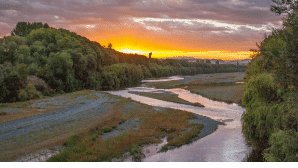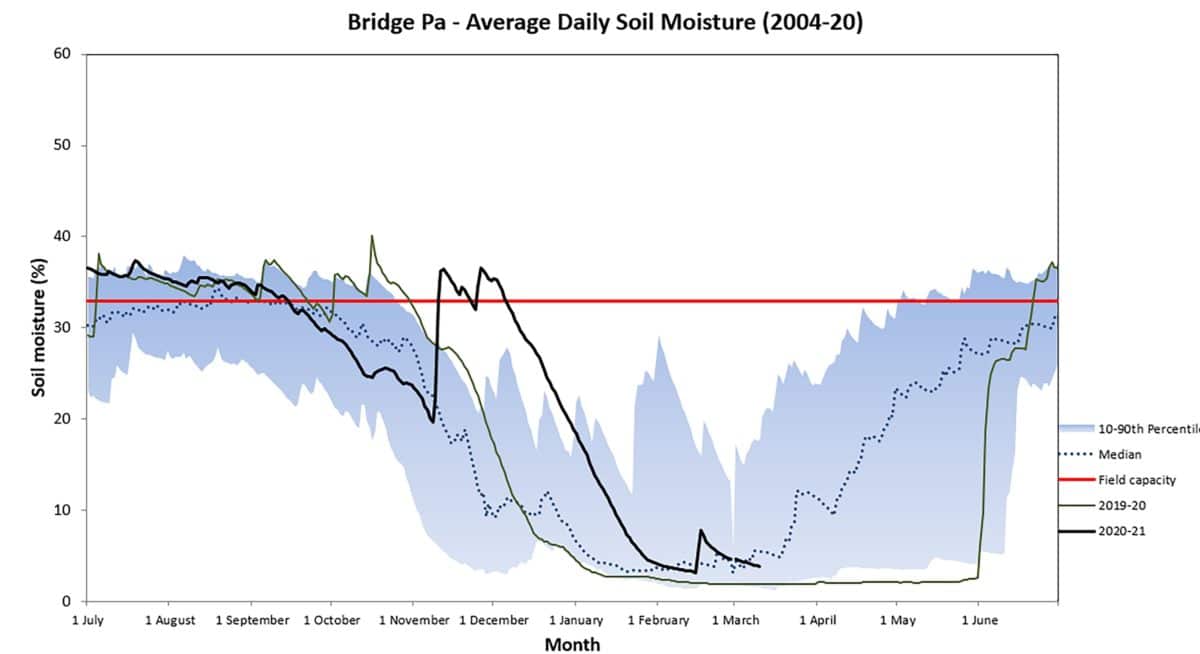Dr Kathleen Kozyniak
Principal Scientist Air
Hawke’s Bay Regional Council
February brought good news for the northern parts of our region, where rainfall totals were near average for the month. Things weren’t so rosy for the rest of Hawke’s Bay. The Heretaunga Plains received only 72% of average February rainfall and the Ruataniwha Plains only 52%, while rainfall in the Kaweka and Ruahine ranges, where the headwaters of some of our main rivers lie, reached 59% and 46%. All of those areas have now had three consecutive months of below normal rainfall. That’s not great.
The low rainfall resulted in river flows being lower than average across the region and put soil moisture on a track heading below median levels for the time of year on the Plains as well as (and even more so) in the hill country west of Hastings. Groundwater levels, thankfully, were okay for the end of summer compared to average and November’s rainfall proved a good fillip for our groundwater stocks. February temperatures weren’t overly hot and soil temperatures started March in the early twenties on the Heretaunga and Ruataniwha Plains.
As I write this, rain is falling (terrific!) and Metservice severe weather watches and warnings are in place. Hopefully over the next 24 to 48 hours we’ll get a good dose of steady rain to bolster soil moisture and get those rivers flowing. The La Niña event that’s been with us through summer is expected to wane through autumn and neutral conditions come to the fore. The seasonal forecast models continue with a similar pattern of weather for autumn as they’ve had for summer – higher pressures to the south and southeast of us, lower to the northwest and generally a northeast wind flow. Normal rainfall for Hawke’s Bay is on the cards in their view, though chances are higher than normal totals might eventuate in the north and lower totals in the south. Hopefully not the latter. Temperatures should be near or above normal.
Percentage of Normal Rainfall








